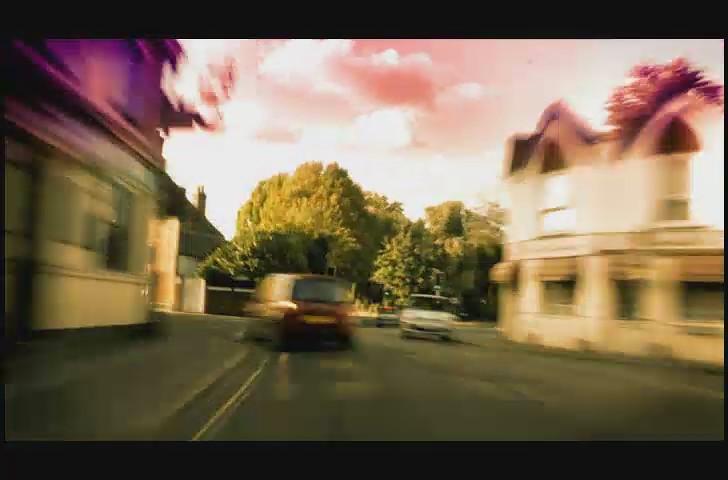
VirtualDub is a powerful video editing software that offers a range of features to help you enhance and customize your videos. Whether you’re a beginner or a seasoned video editor, VirtualDub provides a user-friendly platform that allows you to perform various tasks, such as cropping, resizing, and applying filters to your videos with ease. In this article, we will guide you through the essentials of using VirtualDub, providing you with step-by-step instructions and valuable tips to make the most out of this software. So let’s dive in and explore the world of VirtualDub, empowering you to take your video editing skills to new heights.
Getting Started with Virtual Dub
Virtual Dub is a powerful video editing software that allows you to perform various tasks like video capturing, editing, and even processing. Whether you are a beginner or an experienced user, this post will guide you on how to use Virtual Dub effectively and make the most out of its features.
Downloading and Installing: To get started with Virtual Dub, visit the official website and download the latest version compatible with your operating system. Once the download is complete, simply run the installation file and follow the on-screen instructions to install the software. Virtual Dub is a lightweight program, so it won’t take up too much space on your computer.
Opening a Video File: After successfully installing Virtual Dub, launch the program and click on “File” in the menu bar. From there, select ”Open video file” to browse your computer and locate the video file you want to work with. Once you’ve selected the file, click “Open” to load it into Virtual Dub.
Basic Video Editing: Virtual Dub offers a wide range of editing tools to enhance and modify your videos. One of the most common tasks is cutting unwanted portions of the video. To do this, move the video slider to the desired starting point, then click on “Edit” in the menu bar and select “Set Selection Start”. Similarly, move the slider to the end point and select “Set Selection End”. Finally, click on “Edit” again and choose “Delete to Selection” to remove the selected portion.
Applying Filters and Effects: Virtual Dub provides a variety of filters and effects to enhance your videos. To apply a filter, click on “Video” in the menu bar, then select “Filters”. A window will appear with a list of available filters. Simply click on the desired filter and configure its settings, if necessary. Once you’re satisfied, click “OK” to apply the filter to your video.
Saving the Edited Video: After making all the necessary edits and adjustments, it’s time to save your video. Go to “File” in the menu bar and select “Save as AVI”. A window will appear where you can choose the output file name, location, and format settings. Virtual Dub also allows you to customize the video codec, frame rate, and audio settings to meet your specific requirements. Once you’ve set everything up, click “Save” to save your edited video.
By following these simple steps, you can quickly get started with Virtual Dub and explore its wide range of features. Remember to experiment and try out different options to achieve the desired results. Virtual Dub is a versatile tool that can greatly enhance your video editing capabilities, so don’t hesitate to explore its full potential.

Understanding the Interface and Functions
VirtualDub is a powerful video editing software that allows users to manipulate various aspects of their video clips. of VirtualDub is essential to make the most out of this software and create stunning videos with ease.
The main interface of VirtualDub is divided into several sections, each serving a specific purpose. The toolbar at the top provides quick access to commonly used functions such as opening, saving, and playing video files. The main video preview window allows you to view your video and make adjustments in real-time. On the right side, you’ll find the control panel which contains various options for editing your videos.
One of the key functions of VirtualDub is its ability to perform basic video edits seamlessly. You can cut, copy, paste, and delete specific sections of your video using the timeline. Simply select the desired segment and apply the desired edit. Additionally, VirtualDub offers a wide range of video filters and effects that allow you to enhance your videos, such as brightness, contrast, and color correction, sharpening, and blurring effects.
VirtualDub also provides advanced audio editing capabilities. You can import an audio file and synchronize it with your video, adjust the volume levels, and even add specific audio effects to enhance the overall audio quality. With VirtualDub, you have complete control over your video’s audio, ensuring a delightful viewing experience for your audience.
When it comes to exporting your edited video, VirtualDub offers various options to suit your needs. You can save your video in different file formats, including AVI, MP4, and MPEG. Additionally, VirtualDub allows you to compress your video using different codecs, ensuring compatibility with different devices and platforms. You can also customize the video resolution, frame rate, and bitrate to optimize the final output.
To further enhance your understanding of VirtualDub’s interface and functions, it’s recommended to explore the software’s extensive documentation and online tutorials. These resources provide step-by-step instructions and helpful tips on utilizing VirtualDub to its full potential. With practice and experimentation, you’ll master the interface and functions of VirtualDub, enabling you to create professional-looking videos effortlessly.

Importing and Exporting Files in Virtual Dub
Virtual Dub is a powerful video editing tool that allows you to import and export files with ease. Whether you are a beginner or an advanced user, understanding how to navigate through the importing and exporting process is essential. In this post, we will guide you through the steps on how to effectively import and export files in Virtual Dub.
Importing Files:
Launch Virtual Dub: Open Virtual Dub on your computer by double-clicking the application icon. You will be greeted with a user-friendly interface.
Select “File” from the menu: Click on the ”File” tab located at the top left corner of the interface. A drop-down menu will appear.
Choose “Open video file”: Select the “Open video file” option from the drop-down menu. A file explorer window will pop up.
Locate your file: Navigate to the location where your video file is saved and select it. Click on the “Open” button to import the file into Virtual Dub.
Exporting Files:
Edit your video: Before exporting your file, make sure to apply any desired edits or modifications. Virtual Dub offers a range of editing tools such as cropping, resizing, and adding filters. Experiment with these features to enhance your video.
Select “File” from the menu: Once you are satisfied with your edits, go back to the “File” tab located at the top left corner of the interface.
Choose ”Save as AVI”: Click on the “Save as AVI” option from the drop-down menu. A save window will appear.
Specify the file name and location: Enter a name for your exported file and choose the desired location to save it. Ensure that the file format is set to AVI. Click on the ”Save” button to start the exporting process.
Additional Tips:
Virtual Dub supports a wide range of video formats, including MPEG, MP4, and WMV. To import files in these formats, simply select “Open video file” and choose the appropriate format from the file explorer window.
When exporting your file, consider adjusting the compression settings to achieve the desired file size and video quality. Virtual Dub provides various compression options, such as codecs and bitrate settings, which can be accessed through the compression dialog box.
In conclusion, mastering the importing and exporting process in Virtual Dub is crucial for creating and editing videos efficiently. By following the steps outlined above, you will be able to navigate through the application with ease and achieve the desired results. So, go ahead and explore the endless possibilities that Virtual Dub offers in terms of importing and exporting files!
Mastering Video Editing Techniques in Virtual Dub
Video Editing Techniques in Virtual Dub
Virtual Dub is a powerful, free video editing software that allows you to perform various editing techniques to enhance your videos. Whether you’re a beginner or an experienced editor, mastering the different techniques can take your editing skills to the next level. In this post, we will explore some essential video editing techniques in Virtual Dub that can help you create professional-looking videos.
Cropping and Resizing
One of the basic yet crucial techniques in video editing is cropping and resizing. Virtual Dub makes it incredibly easy to crop and resize videos to frame the desired content perfectly. To crop a video, simply select the desired segment and remove the unwanted parts. Additionally, you can resize the video to fit specific dimensions or aspect ratios, ensuring compatibility across different devices and platforms.
Applying Filters
Virtual Dub offers an extensive range of filters that allow you to enhance your videos in various ways. Whether you want to adjust colors, apply a blur effect, add text overlays, or stabilize shaky footage, Virtual Dub has got you covered. With just a few clicks, you can apply different filters to your videos and make them stand out.
Audio Editing
While visuals are essential in video editing, audio plays a vital role in creating engaging content. Virtual Dub enables you to edit and enhance the audio in your videos easily. You can adjust volume levels, add background music, remove noise, or even create a voiceover. With Virtual Dub’s intuitive audio editing features, you can ensure that your videos have top-notch sound quality.
Batch Processing
If you need to apply the same editing techniques to multiple videos, Virtual Dub’s batch processing feature can save you a ton of time. By creating a batch script, you can apply identical settings and edits to numerous videos simultaneously. This feature is perfect for YouTubers, filmmakers, or anyone who regularly edits multiple videos.
Encoding and Saving
Once you’ve completed the editing process, Virtual Dub enables you to encode and save your videos in various formats. Whether you need a high-definition video for digital platforms or a compressed format suitable for DVD burning, Virtual Dub provides a wide range of options. You can even customize the encoding settings to match your requirements perfectly.

Optimizing Performance and Troubleshooting Tips
Virtual Dub is a powerful software tool that allows you to edit and process video files. However, like any other software, it may encounter performance issues or errors that can hinder your workflow. In this post, we will provide you with some useful tips to optimize the performance of Virtual Dub and troubleshoot common problems.
1. Utilize Hardware Acceleration:
Virtual Dub supports hardware acceleration, which can significantly speed up the processing and rendering of your video files. To enable this feature, go to the “Options” menu, select “Preferences,” and then choose the “Acceleration” tab. Check the box that says “Use hardware acceleration if available” and click “OK.” This will offload some of the processing tasks to your computer’s GPU, resulting in improved performance.
2. Adjust Audio and Video Compression Settings:
When processing videos in Virtual Dub, it’s crucial to select the appropriate audio and video compression settings. Using highly compressed codecs may cause performance issues or quality degradation. To optimize performance, always choose codecs that strike a balance between file size and quality. Experiment with different settings to find the best configuration for your specific needs.
3. Avoid Editing Directly on the Source File:
Editing a video directly on the source file can be resource-intensive and impact Virtual Dub’s performance. To prevent this, it is recommended to convert your source file into a lossless format, such as AVI or QuickTime, before performing any editing. You can then import the converted video into Virtual Dub, allowing for smoother editing and faster processing times.
4. Clear Temporary Files and Cache:
Over time, Virtual Dub can accumulate temporary files and cache, leading to slower performance. Regularly clearing these files can help optimize the software’s performance. To do this, go to the “File” menu, select “Set temporary directory,” and then click on the “Clear” button next to the temporary directory location. This will remove any unnecessary files that may be slowing down Virtual Dub.
5. Check for Software Updates and Plugins:
Software updates and plugins can introduce performance improvements and bug fixes to Virtual Dub. It’s essential to keep your software up to date by regularly checking for updates on the official Virtual Dub website. Additionally, explore the available plugins, as they can enhance the functionality and stability of Virtual Dub.
Q&A
Q: What is Virtual Dub?
A: Virtual Dub is a free and open-source video capture and processing software designed specifically for Windows.
Q: What are the main features of Virtual Dub?
A: Virtual Dub offers a wide range of features, including video capture from a variety of sources, video editing, and batch-processing capabilities.
Q: How can I download and install Virtual Dub?
A: To download and install Virtual Dub, you can visit the official website, select the appropriate version for your operating system, and follow the installation instructions provided.
Q: How do I capture video using Virtual Dub?
A: To capture video using Virtual Dub, you will first need to connect your video source to your computer. Open Virtual Dub, go to the “File” menu, select “Capture AVI,” and follow the prompts to set up your capture settings. Once configured, click the capture button to start recording.
Q: Can I edit videos using Virtual Dub?
A: Yes, Virtual Dub provides various video editing tools. You can trim, crop, resize, and apply different filters and effects to enhance your videos. It is important to note that Virtual Dub does not support all video formats, so you may need to convert your file before editing.
Q: How can I save my edited videos in Virtual Dub?
A: To save your edited video in Virtual Dub, go to the “File” menu and select “Save as AVI.” You can choose the desired file name and location, and Virtual Dub will create a new AVI file with your edits applied.
Q: Can Virtual Dub process videos in batch?
A: Yes, Virtual Dub offers batch-processing capabilities to apply the same set of edits or filters to multiple videos. Select the desired videos in the main window, go to the “File” menu, and choose “Batch Processing.” Configure your settings and apply the changes to all selected videos.
Q: Are there any limitations or drawbacks to using Virtual Dub?
A: While Virtual Dub is a powerful video processing software, it has certain limitations. It can only handle AVI files natively, so you may need to convert your videos to AVI format before using Virtual Dub. Additionally, Virtual Dub does not support advanced features such as non-linear editing or support for modern video formats.
Q: Can Virtual Dub process audio files as well?
A: Virtual Dub is primarily designed for video processing, but it can also handle audio files. However, its audio editing capabilities are limited compared to specialized audio editing software.
Q: Where can I find help or tutorials on using Virtual Dub?
A: Virtual Dub has an active community of users, and you can find helpful tutorials, guides, and discussion forums on various websites and forums. The official Virtual Dub website also provides documentation and guides for using the software effectively. In conclusion, Virtual Dub offers users a convenient and user-friendly platform to edit videos effortlessly. Whether you are a professional filmmaker or an amateur enthusiast, this software provides a range of essential tools and features to enhance your video editing experience. From simple tasks like trimming and merging clips to more advanced processes like applying filters and codecs, Virtual Dub caters to all your editing needs. Moreover, its lightweight nature ensures smooth operation on various systems without compromising on performance. With its extensive documentation and supportive community, learning to use Virtual Dub becomes a seamless journey for beginners. So, take a leap into the world of video editing with Virtual Dub and unlock your creative potential today!






